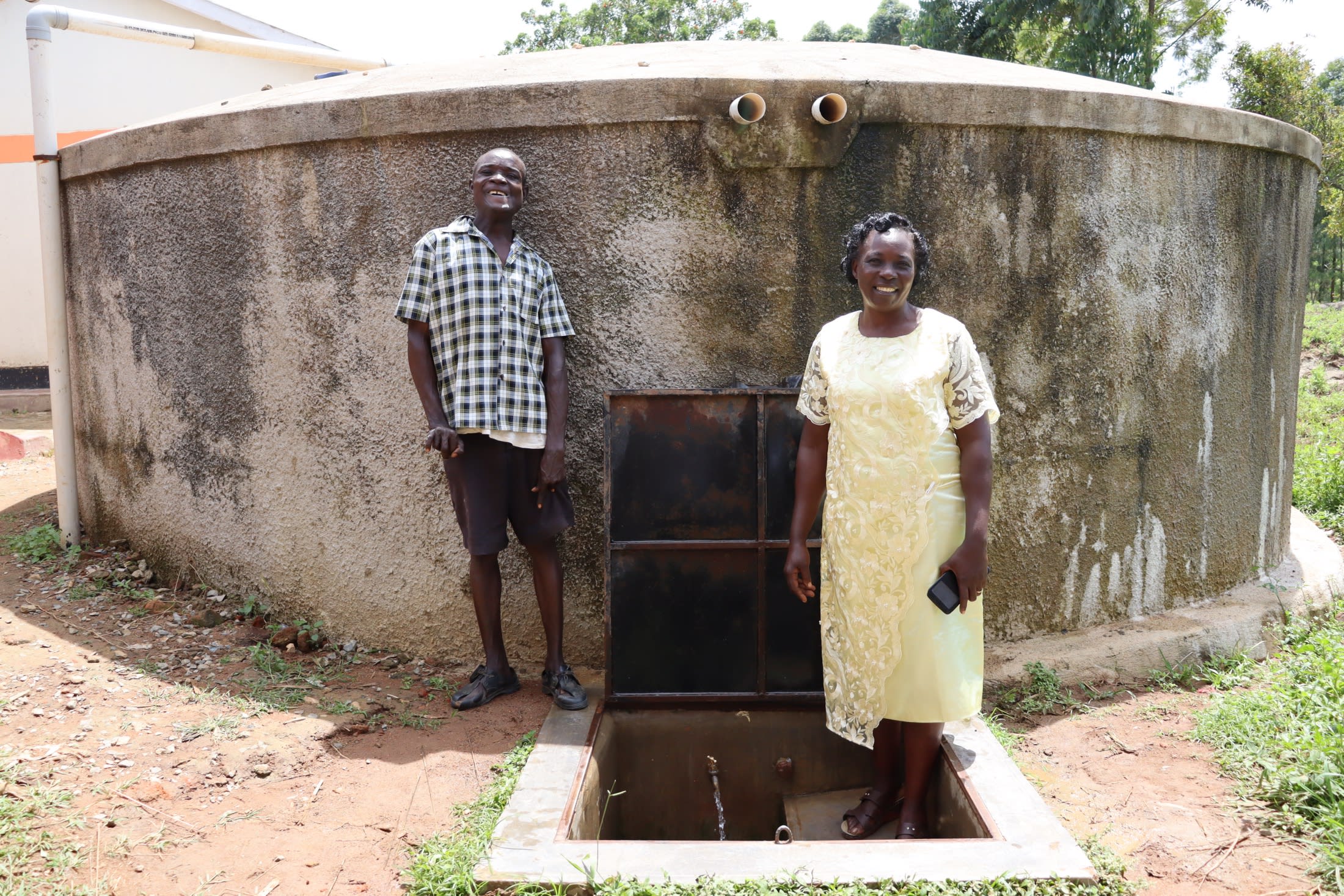Samitsi Special School stands directly opposite Samitsi Primary School along the Malava-Samitsi earthen road. The area is a bit serene, with the public playground neighboring the school. The vegetation of trees and farm crops can be seen in the neighboring homesteads.
Samitsi Special School was established in 2010 with just four classrooms under Headteacher Madam Ezna Fifa's direction. Since its opening, obtaining an education has been provided free of charge for day students. When the school later introduced its boarding section, it began charging a minimal fee for students' care. The pupils have never sat for the standard national education examinations. Today, the school serves 140 students and 9 teachers and staff, with just 6 students living in the boarding program.
There is only one water source within school grounds, a set of taps connected to municipal piped water. But the piped water is not consistent or sufficient to meet the entire school's drinking, cooking, and cleaning needs. It only turns on for a few hours a few days each week, never following a set schedule.
As a result, pupils have to fetch water each morning and afternoon while at school. The students head across the busy road to the borehole at the primary school. There, students from Samitsi Special School are often bullied by their agemates from the primary school. For those students with physical disabilities, the short walk to the well can take a long time, wasting their precious class time in the process. At least one teacher must always accompany the students to fetch water, further taking them away from their syllabus coverage and other school responsibilities.
"I fear crossing the road to go the borehole. The other pupils at Samitsi Primary school sometimes scare us off. I don't enjoy fetching water," said pupil Janepher.
Even with students fetching water across the street, the school does not have enough water. It has to pay parents, and use school staff, to go to a spring in the village to fetch still more water and deliver it to the school. The protected spring is too far away from the school for teachers to consider sending their students. The spring is always crowded with community members who also need to fetch water, making these trips long and frustrating for the school staff, who need to get back to their duties. The school is losing a lot of money paying for this special water delivery.
Without enough water, the school often has to sacrifice basic hygiene and sanitation measures, including handwashing and cleaning the latrines.
"Lack of a reliable water source in the school affects me directly, especially when it comes to the school sanitation. We can't do our cleaning properly," said teacher Janepher V. Nakhurenya.
What We Can Do:
Rain Tank
A 75,000-liter rainwater catchment tank will help alleviate the water crisis at this school. The school will help collect the needed construction materials such as sand, bricks, rocks, and water for mixing cement. We will complement their materials by providing an expert team of artisans, tools, hardware, and the guttering system. Once finished, this tank will begin catching rainfall used by the school’s students and staff for drinking, handwashing, cooking, cleaning, and much more.
The school and we strongly believe that all of these components will work together to improve standards at this school, which will help lead to better student academic performance and unlock the potential for these students to live better, healthier lives.
Handwashing Stations
The student health club will oversee the two new handwashing stations we will provide and ensure they are kept clean and in working condition. The club leaders will fill the handwashing stations with water daily and make sure they are always supplied with a cleaning agent such as soap or ash.
VIP Latrines
Two triple-door latrine blocks will be constructed with local materials that the school will help gather. Three doors will serve the girls, and three doors will serve the boys. These new latrines will have cement floors designed to be easy to use and clean. And with a rain tank right on school property, there should be enough water to keep them clean.
Training on Health, Hygiene, COVID-19, and More
We will hold a one-day intensive training session with students, teachers, and parents. This training will cover a wide range of topics, including COVID-19 symptoms, transmission routes, and prevention; personal and environmental hygiene; and the operation and maintenance of the rain tank, latrines, and handwashing stations. There will be a special emphasis on handwashing.
Our team of facilitators will use various methods to train, including participatory hygiene and sanitation transformation and asset-based community development. We will initiate a student health club, which will prepare students to lead other pupils into healthy habits at school and home. We will also lead lectures, group discussions and provide illustrative handouts to teach health topics and promote good hygiene practices within the school, including handwashing and water treatment. We will then conduct a series of follow-up training before transitioning to our regularly scheduled support visits throughout the year.

 Rainwater Catchment
Rainwater Catchment
 Rehabilitation Project
Rehabilitation Project


































